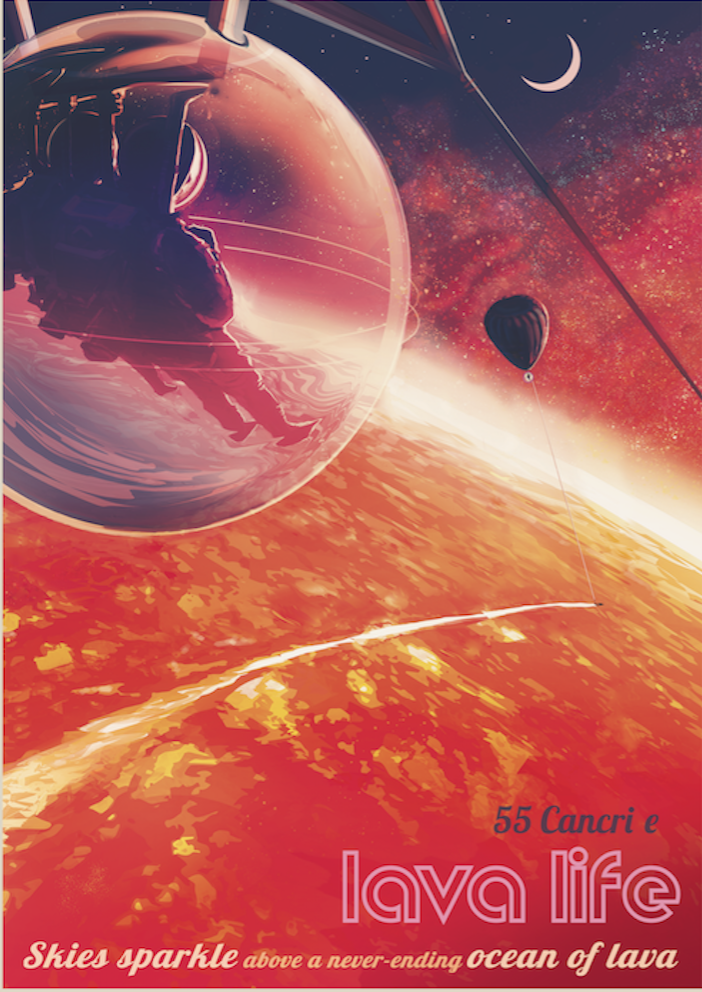Explore the plethora of planets outside our solar system with cool multimedia experiences from NASA’s Exoplanet Exploration Program. Here’s what’s new:

Travel posters:
Designed in the style of vintage travel posters, the Exoplanet Travel Bureau poster series imagines what it might be like to visit known planets outside our solar system, which are called exoplanets. The newest poster (above) shows futuristic explorers in a protective bubble, gliding over the red-hot landscape is 55 Cancri e, a planet that may be covered in a lava ocean.
It’s a fun collection of posters, and they are all free to download. See them all here.
360-degree visualization:
55 Cancri e is also now part of the Exoplanet Travel Bureau’s 360-degree visualization tool, which lets you take a virtual tour of what the planet’s surface might look like, based on the limited data available (no photos of the planet exist). Seen as a massive fiery orb on the horizon, the planet’s star is 65 times closer to 55 Cancri e than the sun is to Earth. On the planet’s cooler nightside, silicate vapor in the atmosphere may condense into sparkling clouds that reflect the lava below.
All of the 360-degree visualizations are viewable on desktop computers, mobile devices and through virtual reality headsets that work with smartphones.

Life and death of a solar system
How do stars and planets come into being, and what fate awaits planets after their stars die? The interactive web feature Life and Death of a Planetary System takes you on an in-depth journey through the formation, evolution and eventual demise of a solar system. This story offers insight into how our planet Earth formed, and what will happen to it when the sun dies.

Help EarthSky keep going! Please donate what you can to our once-yearly crowd-funding campaign.
Bottom line: New multimedia from NASA includes (free) Exoplanet Travel Bureau posters, 360-degree visualizations, and a journey into the life and death of planetary systems.











